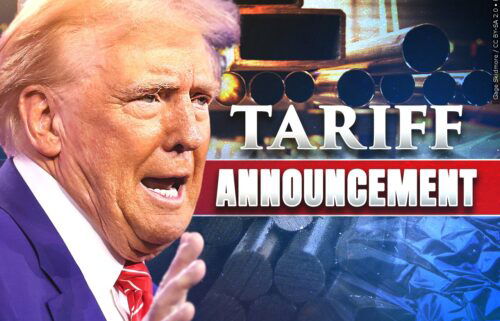Chicago mayor is only granting interviews to journalists of color ahead of her two-year anniversary
Denouncing the lack of diversity amid Chicago media outlets, Mayor Lori Lightfoot has announced that she will only give journalists of color one-on-one interviews to mark her two-year anniversary as the Windy City’s top bureaucrat.
“I ran to break up the status quo that was failing so many. That isn’t just in City Hall,” the mayor tweeted on Wednesday. “It’s a shame that in 2021, the City Hall press corps is overwhelmingly White in a city where more than half of the city identifies as Black, Latino, AAPI or Native American.”
The lack of diversity has long been an issue across the media industry. Nonetheless, journalists of color have questioned Lightfoot’s decision.
Gregory Pratt, a Chicago Tribune reporter who covers the city’s mayor and city council, took issue with the decision, saying politicians should not choose who covers them.
“There are real diversity issues in media,” Pratt told CNN on Thursday. “It’s important newspaper bosses acknowledge and work on it. At the same time, it’s important for government officials to be accessible and answer tough questions from journalists of all backgrounds.”
Pratt, a Latino journalist, tweeted Wednesday that he was granted an interview with the mayor but canceled it after he asked her office to lift their condition and it declined to do so.
In a two-page letter sent to local media outlets and dated May 19, Lightfoot said she has done everything she can to fight for diversity and inclusion during her adult life. Being the city’s mayor makes her “uniquely situated” to shine a spotlight on the issue, she said.
Since her election, the country has faced an “historic reckoning around systemic racism” and it does not appear that media outlets in Chicago “have caught on and truly have not embraced this moment,” Lightfoot said in the letter shared with CNN.
While Lightfoot claimed in her letter there are no female journalists of color covering city hall, Chicago public radio station WBEZ has said two of its three reporters are Hispanic and South Asian women.
A 2018 Pew Research Center analysis shows that more than 75% of newsroom employees are non-Hispanic White people and more likely to be male when compared to workers across the United States.
About 60% of the US population is non-Hispanic White, while 18% is Hispanic, 13.4% is Black or African American and nearly 6% is Asian, according to US Census data.
For Lynn Sweet, Washington bureau chief of The Chicago Sun-Times, the mayor didn’t say anything that newsrooms in the city were not aware of.
“Chicago is a very diverse city. The newsrooms are not,” Sweet said on CNN’s “New Day” on Thursday.
Sweet said city officials often choose which reporters and media outlets are granted one-on-one interviews.
“When you’re a big newsmaker with many interview requests, you pick and choose,” Sweet said. “Some of the outlets that she is talking to today are community outlets that don’t have the resources to staff city hall every day, like the big legacy outlets do, and what’s wrong with that?”
The National Association of Black Journalists said it did not support the mayor’s tactic but acknowledged that her comments shine a “needed spotlight on the call for a greater commitment to diversity, equity and inclusion across the media industry.”
“This local issue is reflective of what is happening around the country and we continue to work to change the status quo,” the NABJ said in a statement.
Meanwhile, the National Association of Hispanic Journalists said the group doesn’t condone restricting press access based on a journalist’s race or ethnicity.
“Any action that threatens the cornerstone of our democracy and First Amendment rights is unacceptable. We must take more effective steps to achieve lasting equity in newsrooms and news coverage,” NAHJ tweeted.


